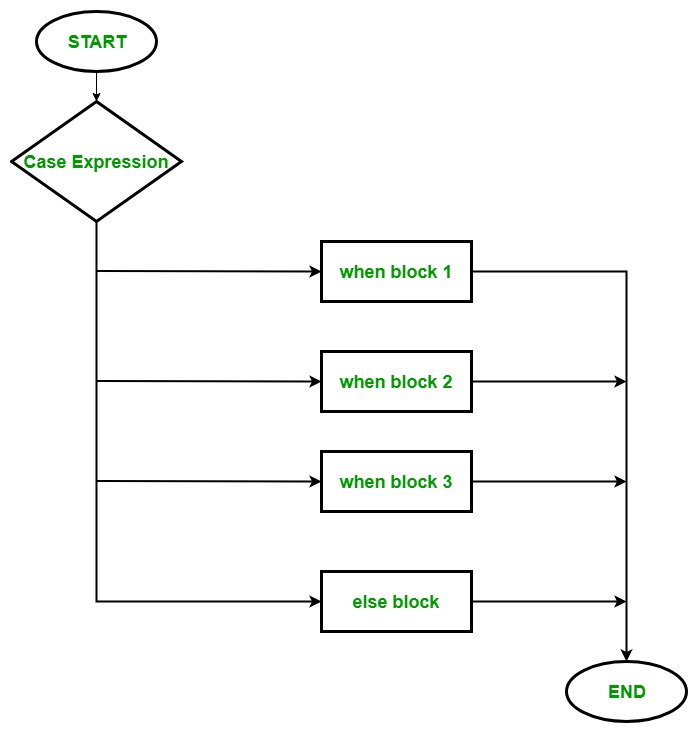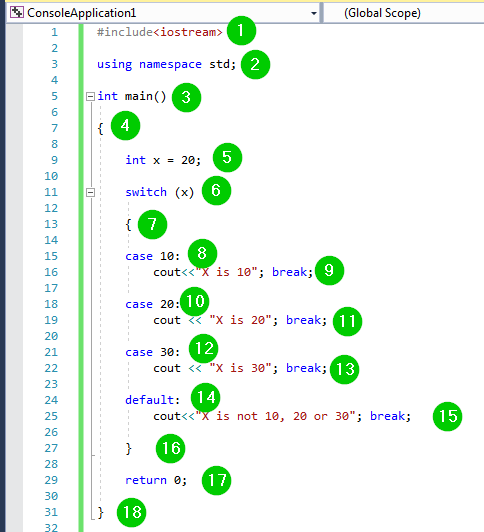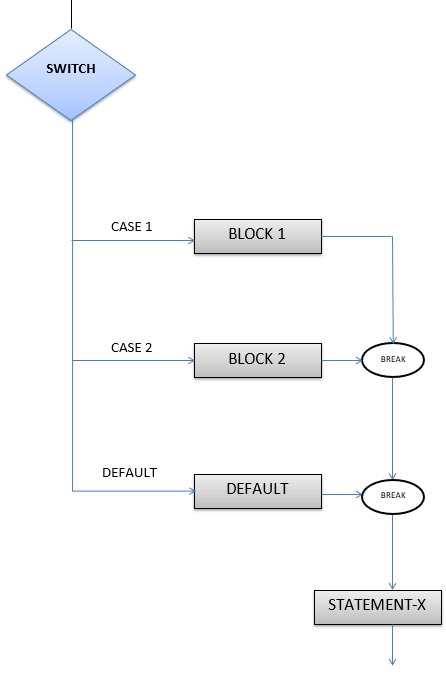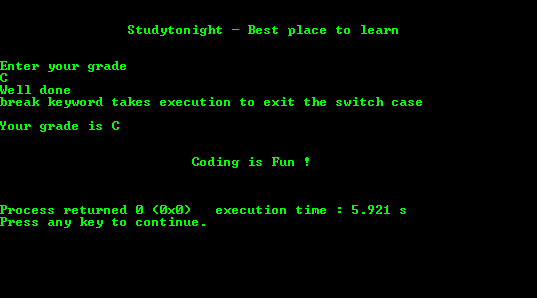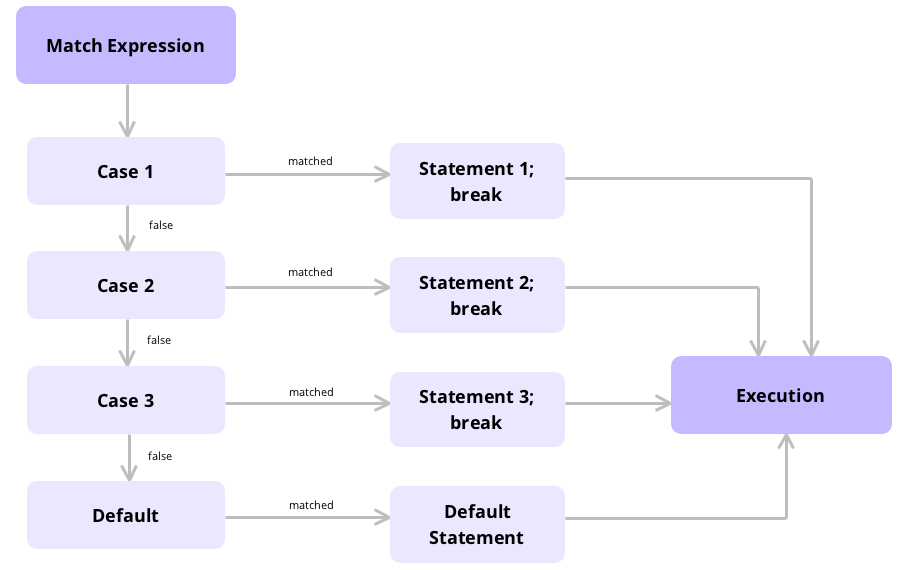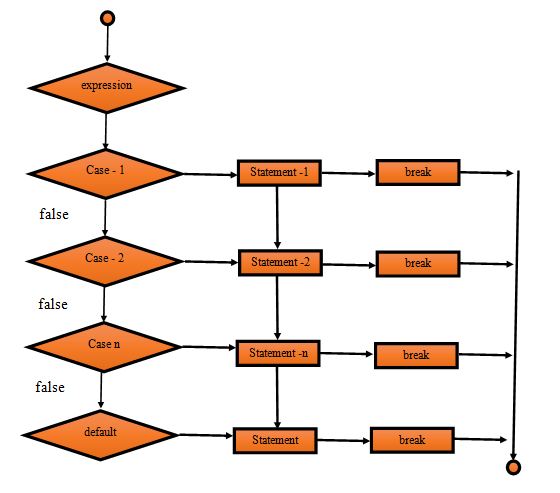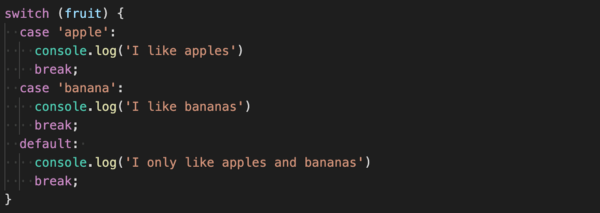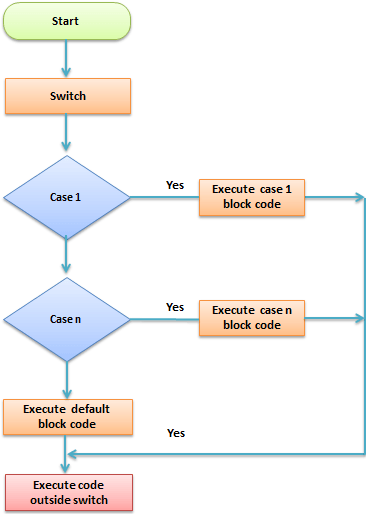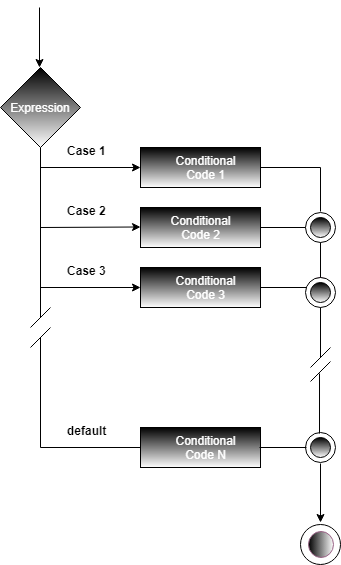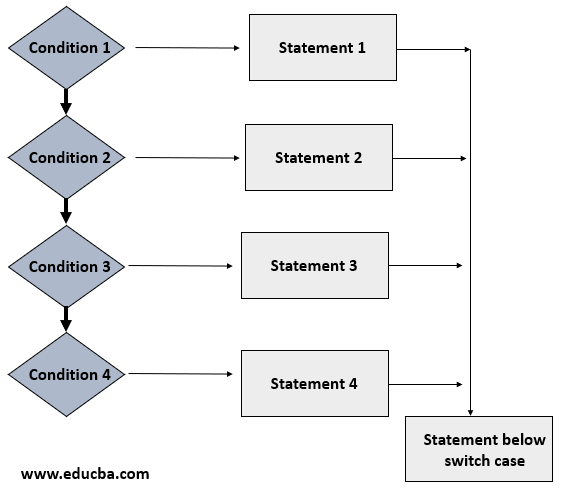Variable case when bool condition statements when bool condition statements else the else clause is optional statements end if you assigned variable before.
Ruby switch case multiple conditions.
Ruby print enter your grade.
In this post you will learn a few different use cases and how it all really works under the hood.
Ruby case statement syntax case expression when expression expression then code.
Do the default break.
Switch value case var s when new 1 2 contains s.
I was curious if it was possible to have a compound case to send multiple variables to be compared in a switch statement.
Can i use a range instead of a one number or if you want to understand basics of c switch case.
Grade gets.
Stock 10 if stock 1 puts sorry we are out of stock end notice the syntax.
It is similar to the case keyword in another programming languages.
Whenever you need to use some if elsif statements you could consider using a ruby case statement instead.
It is similar to the switch keyword in another programming languages.
It takes the variables that will be used by when keyword.
If something is true the condition then you can do something.
Something along the lines of.
The components of a case statement in ruby.
Else code end compares the expression specified by case and that specified by when using the operator and executes the code of the when clause that matches.
You can also check range in c switch case.
If you re looking for a case with one condition but multiple matchers.
Basically if elsif else notice there s nothing after the word case.
How to write a switch statement in ruby.
There can be multiple when statements into a single case statement.
I found case statements in ruby pretty interesting as they are capable of doing a little more than the equivalent constructs in other languages.
How to convert a string to lower or upper case in ruby.
It is used to match a single condition.
Case condition when a or b do something when c do something end then you.
This is what needs to be true for the code inside the condition to work.
We all know how a simple case statement works we test on a condition that we give to a case statement we then walk through a set of possible matches each of which is contained in a when statement e g.
In ruby you do this using if statements.
In other programming languages this is known as a switch statement.
The expression specified by the when clause is evaluated as the left operand.
Ruby uses case and when where others use switch and case.

